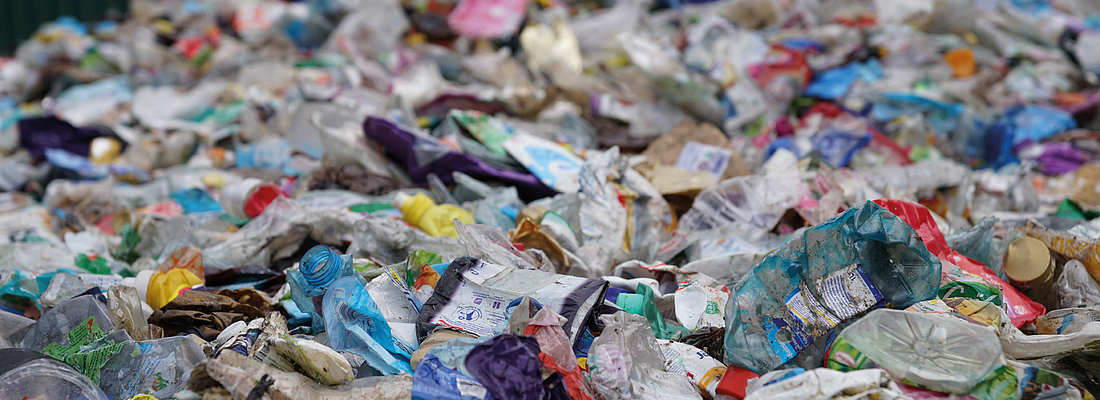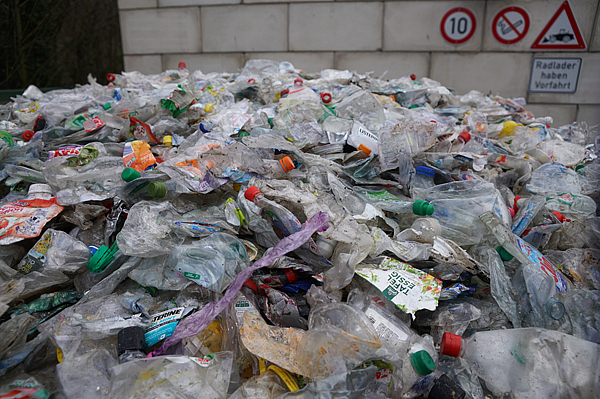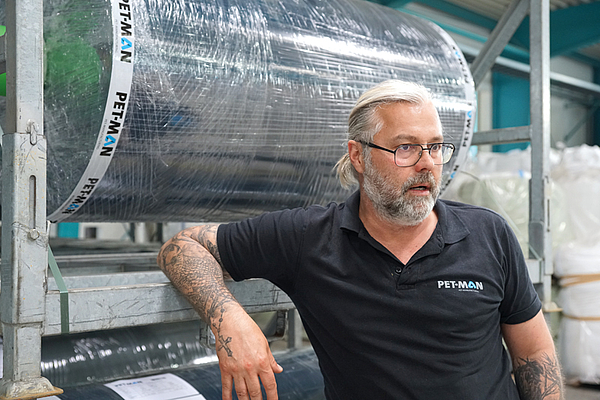What are the results?
Neudorfer: “The outcome made us confident that this can work.” According to him, the produced recycled material was successfully used in the integrated production process from flake to film; all quality criteria and optical characteristics were met better than expected.
High-quality material as a reproducible product – that was the prerequisite for getting real users, i.e. an international manufacturer of branded goods, on board as a customer/partner. In the meantime, the first packaging made from this recovered material has already been produced for international brand manufacturers in their production process. Neudorfer: “We were able to more than fully meet their high quality requirements with regard to the processing and appearance of the final packaging.”.
Is everything already perfect?
“That would be nice,” says Neudorfer. Many groups are involved in the cycle of material flows through to the technical process of recycling itself - whether mechanical, chemical, or enzymatic - and they all have their own interests and wishes. “The more flexible the demands, the more successful circular economy can be established.”
There is still a lot of basic work to be done. From the recycling optimizers’ point of view, it would help a lot if all parties involved were willing to make concessions and accept trade-offs. After all, it is about nothing less than saving CO2, conserving resources and reducing the consumption of primary resources. Products made from recycled material simply do not have the same properties as those made from virgin material. And they are expensive to produce, which is reflected in the price.
_______________
''The more flexible the demands, the more successful circular economy can be established.'' - Markus Neudorfer
_______________
The automotive industry, for example, is struggling with the image of using very little recycled material. If appropriate paths are now taken, producers expect that the new solutions will not be more expensive - and that the quality will remain identical. Brands still find it difficult when recycled material leads to deviations from the standard. Or: Do film packaging have to be free of colour nuances? For example, when it comes to potting soil or compost.
Are there wishes for politics and society?
The team agrees that the legal requirements are not conclusive in every respect. A review of individual specifications and fine-tuning could help here.
An example is a waste disposal company that resells its unsorted plastic goods and receives 100% quota credit. If, however, the same waste disposal company sorts the goods and realises 30% scrap, then only 70% quota is recognised.
How about rethinking sorting to make it even easier to keep recyclables in the application-based cycle? For example, with a sorting plant before incineration that separates residual waste and plastics. Saving plastics for the cycle. Right in front of the furnace door, at the very last moment, so to speak. A path to the future that everyone agrees is worthwhile.
This approach would take the responsibility away from consumers and their “green conscience”. Especially if it were to turn out that despite the separate packaging collection in yellow bags and bins, a large proportion of plastic still ends up in residual waste and thus in incineration.
_______________
FACTS & FIGURES COOPERATION PARTNERS
Idea generator and coordinator Boldog Consulting e.U.
Kenneth Boldog
Plastic waste and flake sorting Tomra Sorting GmbH
Jürgen Priesters
Washing machine for flakes Krones AG
Timm Kirchhoff
Recycling and sorting Zimmermann Recycling und Transporte GmbH
Ralf Zimmermann
Integrated recycling and film extrusion line Starlinger viscotec
Herbert Hofbauer
Film production PET Manufacturing GmbH
Markus Neudorfer
Laboratory analyses TCKT - Transfercenter für Kunststofftechnik
Dr. Christoph Burgstaller
Test runs packaging production
Internationaler brand manufacturers
_______________
What‘s next?
For several years, PET-MAN and Boldog Consulting have been working with partners to prove that recycling PET packaging from the yellow bag, yellow bin or similar household waste streams is possible - thus recycling in the spirit of sustainability instead of incineration. And of course, the team sees further levers to optimise their new packaging-to-packaging rPET materials - which they call p2p-r-PET:
- Find suitable plastic packaging waste fractions with a focus on r-PET that meet the requirements in terms of composition and quality
- Develop state-of-the-art plastic sorting equipment to sort PET trays and PET bottles highly efficiently to maximise yields
- Optimize flake washing systems that can also process flakes with lower weight, smaller average flake sizes and higher dust content with a high yield
- Design flake sorting plants that guarantee 99.99-% “purity” of r-PET flakes
- Develop recycling systems with a super-clean process and fully integrated film extrusion system that can process the new flake quality and meet the requirements of the branded goods industry, e.g. with regard to maximum transparency
- Meet the machinability of the rPET films on the thermoforming systems. This makes it necessary to define new quality requirements - from the waste to the finished packaging through the individual process steps.
- Ensure stable manufacturing processes of the rPET films on the thermoforming lines. This makes it necessary to define new quality requirements - starting with the waste, through the individual process steps to the final packaging.
Conclusion
What succeeds with the bottle-2-bottle PET cycle can also work with PET packaging that has not served as beverage bottles. The cooperation team has set itself the goal of establishing a packagingto-packaging-rPET cycle focusing on sorting, processing and recycling plastic packaging waste. Thus, PET packaging other than beverage bottles should also be sorted and recycled from the yellow bag, the yellow bin or similar household-related waste streams in the future. This will significantly increase the share of recycled PET from household waste streams - and much more PET will remain in the cycle.
www.tomra.com www.petman.com








